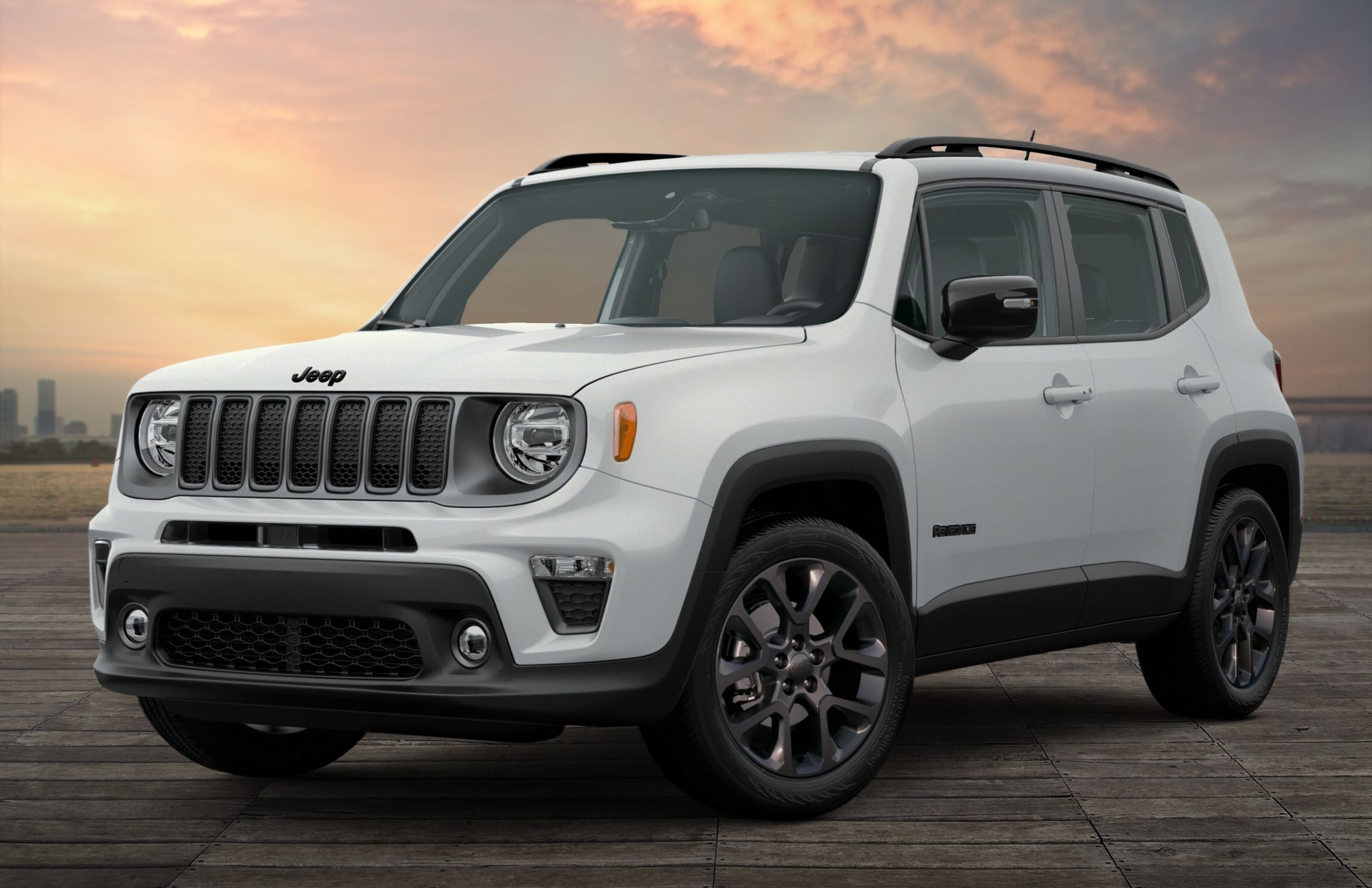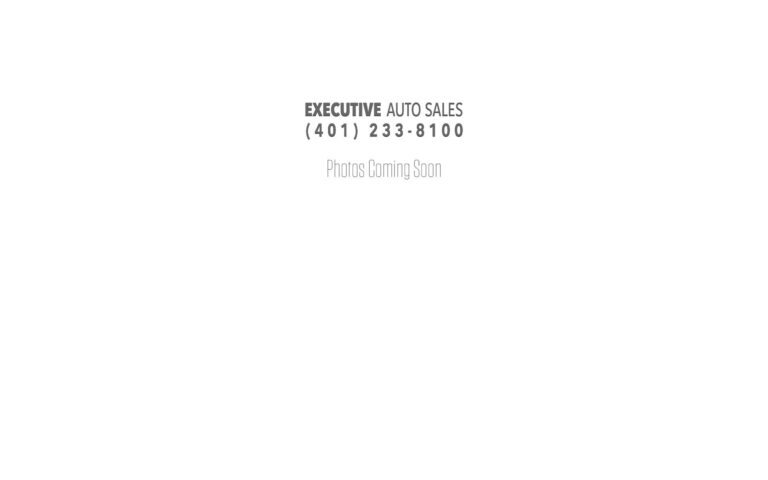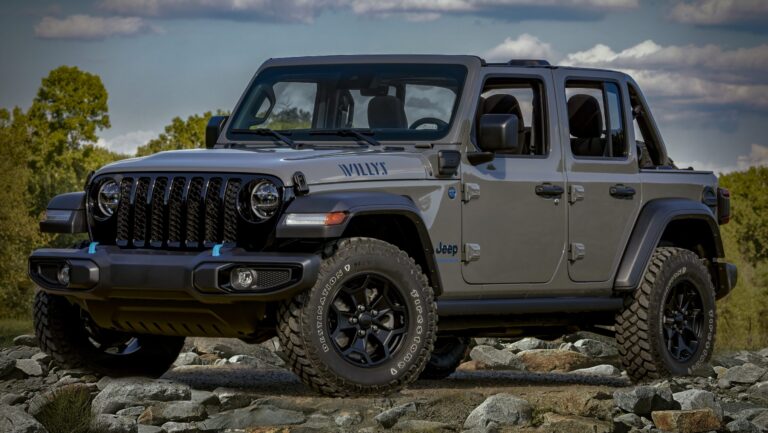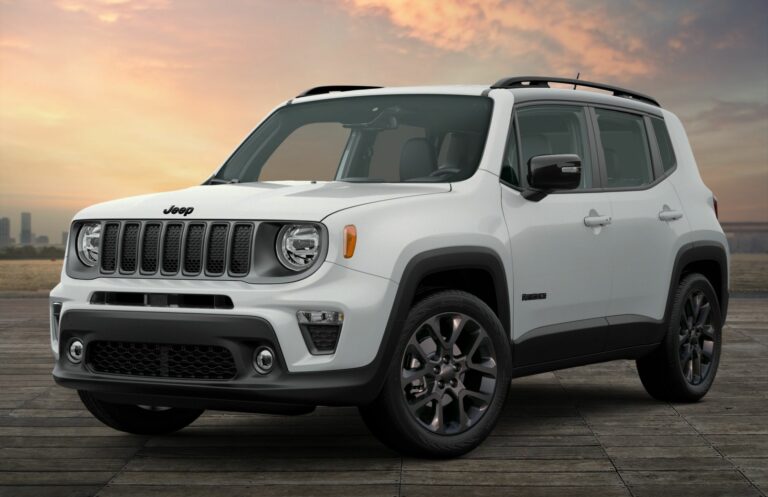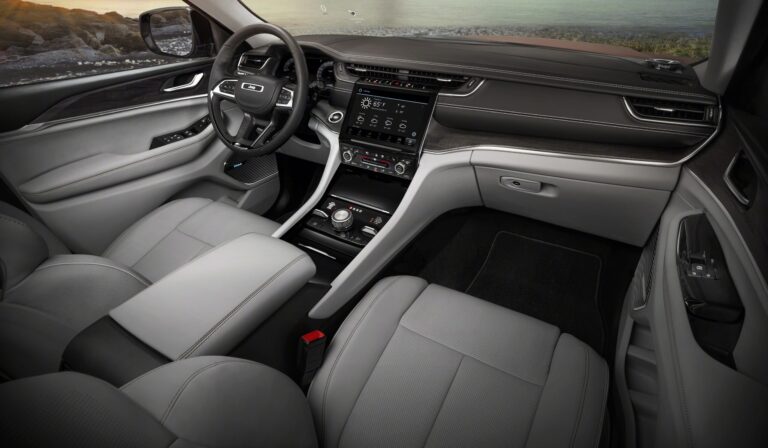Jeep 4.0 For Sale: Your Comprehensive Guide to Buying and Selling the Legendary Inline-Six
Jeep 4.0 For Sale: Your Comprehensive Guide to Buying and Selling the Legendary Inline-Six jeeps.truckstrend.com
For decades, the mention of "Jeep 4.0" has evoked a sense of reverence among off-road enthusiasts and automotive purists alike. It refers to the iconic 4.0-liter inline-six engine, a powerplant synonymous with rugged durability, surprising torque, and an almost legendary ability to keep going long after lesser engines have given up the ghost. When you see a "Jeep 4.0 For Sale" listing, you’re not just looking at a vehicle; you’re looking at a piece of automotive history, a workhorse that has carried countless adventurers over mountains, through mud, and across deserts.
This comprehensive guide is designed for anyone navigating the market for a Jeep equipped with this venerable engine – whether you’re a prospective buyer seeking your next adventure rig or a current owner looking to pass on your beloved 4.0L to a new enthusiast. We’ll delve into why this engine remains so popular, what to look for, how to prepare a vehicle for sale, and much more, ensuring you make an informed decision.
Jeep 4.0 For Sale: Your Comprehensive Guide to Buying and Selling the Legendary Inline-Six
The Legend of the 4.0L Straight-Six
The AMC-designed 4.0-liter (242 cubic inch) inline-six engine, introduced in 1987, quickly became the backbone of Jeep’s utility and off-road lineup. Known internally as the PowerTech I6, it evolved from earlier AMC six-cylinder designs, inheriting their reputation for simplicity and robustness. Its cast-iron block and cylinder head, combined with a relatively low-stress design, made it incredibly resilient.
What sets the 4.0L apart?
- Unrivaled Durability: Many 4.0L engines regularly exceed 200,000 or even 300,000 miles with proper maintenance, a testament to their overbuilt nature.
- Torque-Rich Performance: While not a horsepower monster, the 4.0L delivers its torque low in the RPM range, making it ideal for crawling over obstacles or pulling heavy loads.
- Simplicity: Its relatively straightforward mechanical design means fewer complex electronics to go wrong and easier, more affordable repairs for the average DIY mechanic.
- Reliability: Known for getting you where you need to go and back again, even in challenging conditions.

This combination of attributes cemented the 4.0L’s status as one of the most beloved and dependable engines ever produced, making any "Jeep 4.0 For Sale" listing a potential treasure for the right buyer.
Which Jeeps Came with the 4.0L?
The 4.0L inline-six was a staple across several iconic Jeep models, giving buyers a range of options depending on their needs and preferences.
- Jeep Cherokee (XJ): (1987-2001) Perhaps the most common and versatile platform for the 4.0L. The XJ is a unibody SUV known for its blend of off-road capability and daily drivability. Highly sought after for its relatively light weight and ample aftermarket support.
- Jeep Wrangler (YJ): (1991-1995) The square-headlight Wrangler, successor to the CJ. Offered the 4.0L with fuel injection, a significant upgrade from earlier carburetor models.
- Jeep Wrangler (TJ): (1997-2006) The round-headlight Wrangler that brought back coil springs for a much-improved ride quality. The 4.0L TJ is arguably the most desirable and iconic 4.0L equipped Jeep for many off-roaders. Includes the highly sought-after TJ Rubicon model.
- Jeep Grand Cherokee (ZJ): (1993-1998) The first generation of the luxury-oriented Grand Cherokee also offered the 4.0L as its base engine, providing a more comfortable ride with solid off-road chops.
- Jeep Comanche (MJ): (1987-1992) A pickup truck based on the XJ Cherokee platform. The 4.0L was a popular engine choice, making it a rugged and unique utility vehicle.
Each model offers a distinct experience, from the utilitarian XJ and MJ to the trail-dominating YJ and TJ, and the more refined ZJ. Understanding these differences is key when searching for "Jeep 4.0 For Sale."
Why Buy a Jeep 4.0? (Benefits)
The allure of a 4.0L Jeep goes beyond just its engine. It’s a combination of factors that make these vehicles enduringly popular:
- Unmatched Reliability & Longevity: As discussed, the engine is a tank. With basic maintenance, these Jeeps can run for hundreds of thousands of miles, offering incredible value for money.
- Exceptional Off-Road Capability: Paired with robust drivetrains (e.g., Command-Trac, Selec-Trac, Dana axles), the 4.0L provides the power and torque needed for serious off-roading. Their relatively compact size also aids maneuverability on tight trails.
- Vast Aftermarket Support: The popularity of these models means there’s an enormous industry dedicated to parts, upgrades, and modifications. From lift kits to heavy-duty bumpers, everything you could ever want is available.
- Strong Community & Resale Value: The Jeep community is vibrant and supportive, offering a wealth of knowledge and camaraderie. This also contributes to strong resale values for well-maintained 4.0L Jeeps.
- Simplicity of Maintenance & Repair: The 4.0L engine is relatively easy to work on, making it an excellent choice for those who enjoy DIY maintenance. Parts are readily available and generally affordable.
- Timeless Appeal: These classic Jeeps have a timeless design that never goes out of style.
Key Considerations When Buying a Jeep 4.0
While the 4.0L engine is bulletproof, the vehicles it powers are not immune to age and wear. When looking at a "Jeep 4.0 For Sale," a thorough inspection is crucial.
- Rust, Rust, Rust: This is often the biggest enemy of older Jeeps.
- Frame: Inspect the frame rails thoroughly, especially near suspension mounts, control arm mounts, and anywhere water or mud might collect. Look for bubbling, flaking, or holes.
- Body: Check rocker panels, floorboards (especially under carpets), wheel wells, and behind fender flares. On Wranglers, inspect the body mounts.
- Underbody Components: Check fuel tank skid plates, transmission crossmembers, and steering components.
- Maintenance History: Ask for records. A well-documented history of oil changes, coolant flushes, and transmission services is a huge plus. If no records, assume minimal maintenance and budget accordingly.
- Common 4.0L Engine Issues (Minor):
- Crank Position Sensor (CPS): A common failure point that can cause stalling or no-start conditions. Easily replaceable.
- Exhaust Manifold Cracks: Often cause a ticking sound, especially when cold. Replaceable, sometimes with aftermarket headers.
- Oil Leaks: Common from the rear main seal, valve cover, and oil filter adapter. Not always severe, but worth noting.
- Cooling System: The plastic components (radiator, thermostat housing) can become brittle. Inspect for leaks, ensure the fan clutch is working, and check coolant color (should be green/orange, not rusty).
- Drivetrain Health:
- Transmission: Check fluid color and smell. Listen for clunks or harsh shifts. Test 4WD engagement (2H, 4H, 4L).
- Transfer Case: Listen for grinding or clunking. Ensure smooth engagement of 4WD modes.
- Axles: Check for leaks around differential covers and axle seals. Listen for humming or grinding noises during a test drive.
- Modifications:
- Professional vs. DIY: Are modifications done cleanly and correctly, or do they look like a hack job? Poorly installed lifts or wiring can lead to headaches.
- Purpose: Are the modifications suitable for your intended use? A heavily modified rock crawler might not be ideal for daily driving.
- Tires: Check for uneven wear, which could indicate alignment issues or worn suspension components.
- Test Drive Checklist:
- Cold Start: Listen for any unusual noises.
- Steering: Check for play, wandering, or shimmy.
- Brakes: Ensure they are firm and stop the vehicle smoothly.
- Suspension: Listen for clunks or squeaks over bumps.
- Engine Performance: Check for hesitation, misfires, or warning lights.
Tips for Selling Your Jeep 4.0
If you’re listing a "Jeep 4.0 For Sale," presenting it correctly can significantly impact its appeal and your asking price.
- Thorough Cleaning & Detailing: A clean Jeep, inside and out, makes a strong first impression. Clean the engine bay, wash and wax the exterior, and vacuum/detail the interior.
- Gather All Documentation: Compile maintenance records, receipts for parts/upgrades, and the owner’s manual. This builds trust and justifies your asking price.
- Address Minor Issues: Fix small, inexpensive problems (e.g., burnt-out bulbs, small fluid leaks, a faulty window switch). These can deter buyers disproportionately to their cost.
- Highlight Strengths:
- Engine Health: Emphasize regular oil changes, good compression, and lack of major leaks.
- Lack of Rust: If your Jeep is relatively rust-free, this is a major selling point. Provide clear photos.
- Modifications: Detail any quality aftermarket parts or upgrades (e.g., suspension, armor, winch) and their benefits.
- Pricing Strategy:
- Research: Look at similar "Jeep 4.0 For Sale" listings in your area on platforms like Craigslist, Facebook Marketplace, and dedicated Jeep forums.
- Condition: Be realistic about your Jeep’s condition when setting a price.
- Leave Room for Negotiation: Price slightly higher than your absolute minimum to allow for haggling.
- High-Quality Photography: Take clear, well-lit photos from multiple angles, including interior shots, engine bay, undercarriage (if clean), and any unique features or modifications.
- Detailed Listing Description: Write a comprehensive description covering:
- Year, Make, Model, Mileage
- Engine and Transmission type
- Key features and options
- Maintenance history highlights
- Any known issues (be transparent)
- Reason for selling (optional, but can build trust)
Decoding the Different Models (XJ, TJ, YJ, ZJ, MJ)
Each 4.0L Jeep model offers a unique proposition:
- XJ Cherokee: The versatile workhorse. Good for daily driving and moderate trails. Unibody construction means less articulation than a Wrangler, but also lighter and more car-like. Great value.
- TJ Wrangler: The modern classic. Coil springs offer a superior ride to the YJ, making it better for daily use while still being a formidable off-roader. Strong aftermarket, high demand, typically higher prices.
- YJ Wrangler: The ‘square’ Wrangler. Leaf springs all around, offers a more traditional Jeep feel. Can be had for less than a TJ, but often requires more work.
- ZJ Grand Cherokee: The comfortable off-roader. More refined interior and ride than the XJ, but shares many mechanical components. Good for those wanting a blend of comfort and capability.
- MJ Comanche: The rare gem. A true Jeep pickup. Shares XJ front end, but with a stout frame for hauling. Increasingly collectible, often command higher prices due to rarity.
Jeep 4.0 For Sale: Estimated Price Ranges
Prices for "Jeep 4.0 For Sale" vary wildly based on condition, mileage, modifications, location, and the specific model. The table below offers estimated ranges for a non-Rubicon/Scrambler model in the US market, but always do your local research.
| Model | Condition: Excellent (Low Miles, Rust-Free, Well-Maintained) | Condition: Good (Average Miles, Minor Issues/Rust) | Condition: Project/Beater (High Miles, Significant Issues/Rust) |
|---|---|---|---|
| XJ Cherokee | $8,000 – $15,000+ | $4,000 – $8,000 | $1,500 – $4,000 |
| TJ Wrangler | $12,000 – $25,000+ | $7,000 – $12,000 | $3,000 – $7,000 |
| YJ Wrangler | $8,000 – $15,000 | $4,000 – $8,000 | $1,500 – $4,000 |
| ZJ Grand Cherokee | $6,000 – $10,000 | $3,000 – $6,000 | $1,000 – $3,000 |
| MJ Comanche | $10,000 – $20,000+ (Highly Variable) | $5,000 – $10,000 | $2,000 – $5,000 |
Note: These are general estimates. Exceptionally clean, low-mileage, or highly modified examples can command significantly higher prices. Rare models like the MJ Comanche are particularly sensitive to condition.
Frequently Asked Questions (FAQ) about Jeep 4.0
Q1: Is the Jeep 4.0L engine truly reliable?
A1: Yes, it is widely regarded as one of the most reliable and durable engines ever made. With proper maintenance, it’s common for them to exceed 200,000-300,000 miles.
Q2: What’s the best year for the 4.0L engine?
A2: Most enthusiasts agree that the later High Output (HO) versions (1991-2006) are the best. The 1999-2001 models (XJ and TJ) had a "0331" cylinder head that is prone to cracking, but this can be addressed with an aftermarket head. Overall, any 4.0L with good maintenance history is a strong contender.
Q3: What are the most common problems with the 4.0L engine itself?
A3: Common issues are usually minor and include failing Crank Position Sensors (CPS), cracked exhaust manifolds (causing a ticking sound), and various oil leaks (e.g., rear main seal, valve cover gasket). The cooling system (radiator, water pump, fan clutch) also requires regular attention due to age.
Q4: What kind of fuel economy does a 4.0L Jeep get?
A4: Not great, but acceptable for a rugged SUV. Expect 15-18 MPG combined in stock form, potentially less with larger tires, lift kits, or aggressive driving. Wranglers tend to be on the lower end due to aerodynamics.
Q5: Can I lift a 4.0L Jeep and add bigger tires?
A5: Absolutely! These Jeeps are renowned for their modifiability. Lift kits and larger tires are common upgrades, enhancing off-road capability and appearance. Just be aware that larger tires will impact fuel economy and potentially require re-gearing the axles for optimal performance.
Q6: Are parts still available for the 4.0L engine and its associated Jeeps?
A6: Yes, parts availability is excellent. Due to the popularity and longevity of these vehicles, both OEM and aftermarket parts are readily available from numerous suppliers, making ownership and repairs relatively easy.
Q7: What’s the difference between the HO and non-HO 4.0L?
A7: The High Output (HO) 4.0L (1991-2006) features a different cylinder head, intake manifold, and fuel injection system, resulting in slightly more horsepower (around 190 HP vs. 177 HP in earlier versions) and improved torque delivery. Both are very robust engines.
Conclusion
The "Jeep 4.0 For Sale" market offers a unique opportunity to own a piece of automotive legend. These vehicles, powered by the indefatigable 4.0-liter inline-six, represent a bygone era of rugged simplicity and genuine off-road prowess. Whether you’re a seasoned Jeeper or a newcomer to the fold, the appeal of a 4.0L lies in its unmatched durability, ease of maintenance, and the vast community that supports it.
For buyers, a thorough inspection, especially for rust and proper maintenance, is paramount. For sellers, transparency and good preparation will ensure you find the right home for your cherished Jeep. Ultimately, investing in a 4.0L Jeep isn’t just buying a vehicle; it’s buying into a lifestyle, a legacy of adventure, and a machine that truly lives up to the "Go Anywhere, Do Anything" motto. Happy trails!
